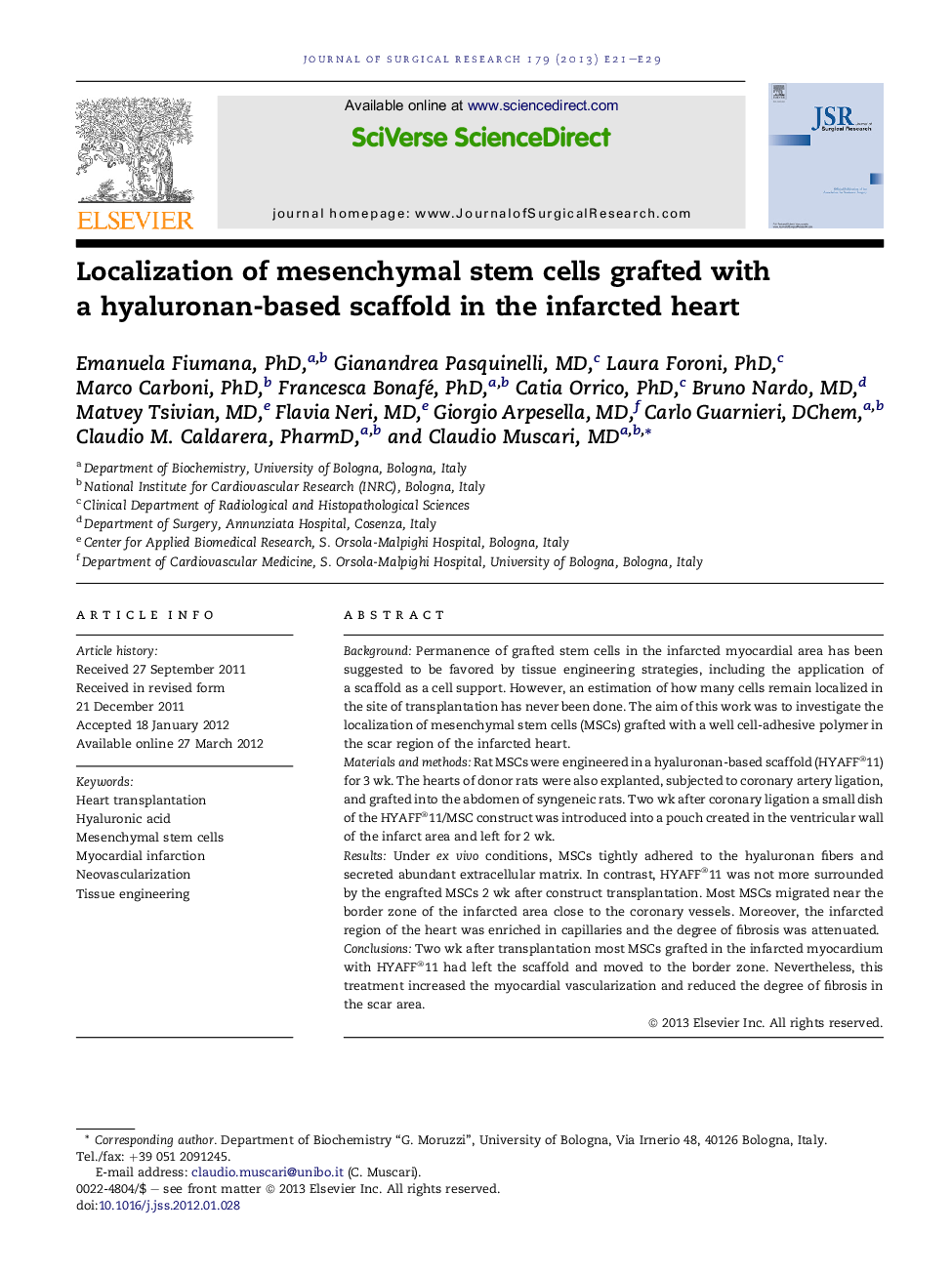| Article ID | Journal | Published Year | Pages | File Type |
|---|---|---|---|---|
| 4301097 | Journal of Surgical Research | 2013 | 9 Pages |
BackgroundPermanence of grafted stem cells in the infarcted myocardial area has been suggested to be favored by tissue engineering strategies, including the application of a scaffold as a cell support. However, an estimation of how many cells remain localized in the site of transplantation has never been done. The aim of this work was to investigate the localization of mesenchymal stem cells (MSCs) grafted with a well cell-adhesive polymer in the scar region of the infarcted heart.Materials and methodsRat MSCs were engineered in a hyaluronan-based scaffold (HYAFF®11) for 3 wk. The hearts of donor rats were also explanted, subjected to coronary artery ligation, and grafted into the abdomen of syngeneic rats. Two wk after coronary ligation a small dish of the HYAFF®11/MSC construct was introduced into a pouch created in the ventricular wall of the infarct area and left for 2 wk.ResultsUnder ex vivo conditions, MSCs tightly adhered to the hyaluronan fibers and secreted abundant extracellular matrix. In contrast, HYAFF®11 was not more surrounded by the engrafted MSCs 2 wk after construct transplantation. Most MSCs migrated near the border zone of the infarcted area close to the coronary vessels. Moreover, the infarcted region of the heart was enriched in capillaries and the degree of fibrosis was attenuated.ConclusionsTwo wk after transplantation most MSCs grafted in the infarcted myocardium with HYAFF®11 had left the scaffold and moved to the border zone. Nevertheless, this treatment increased the myocardial vascularization and reduced the degree of fibrosis in the scar area.
